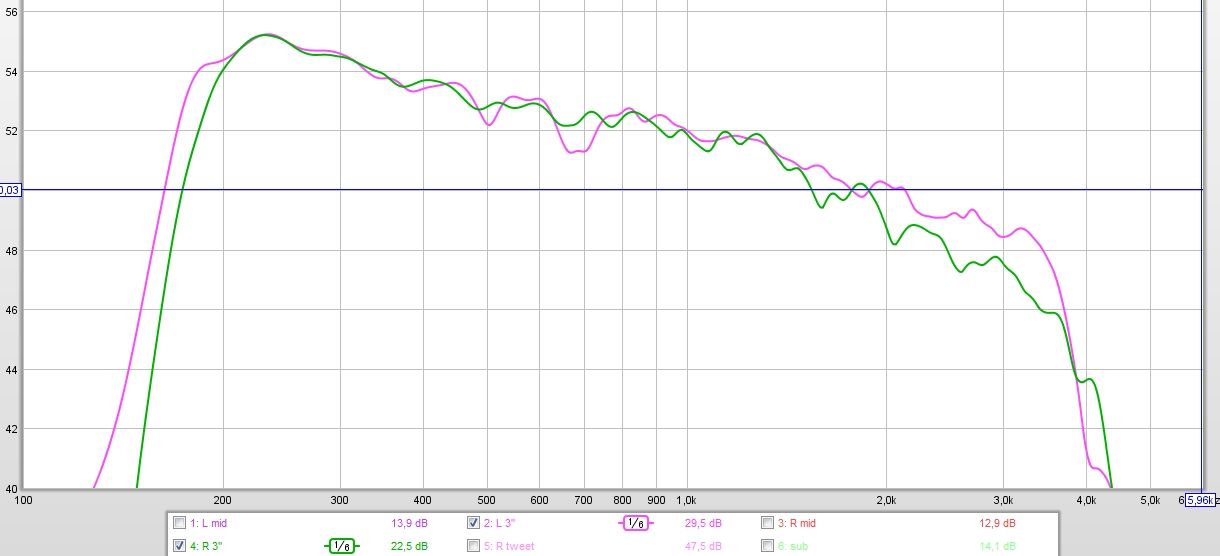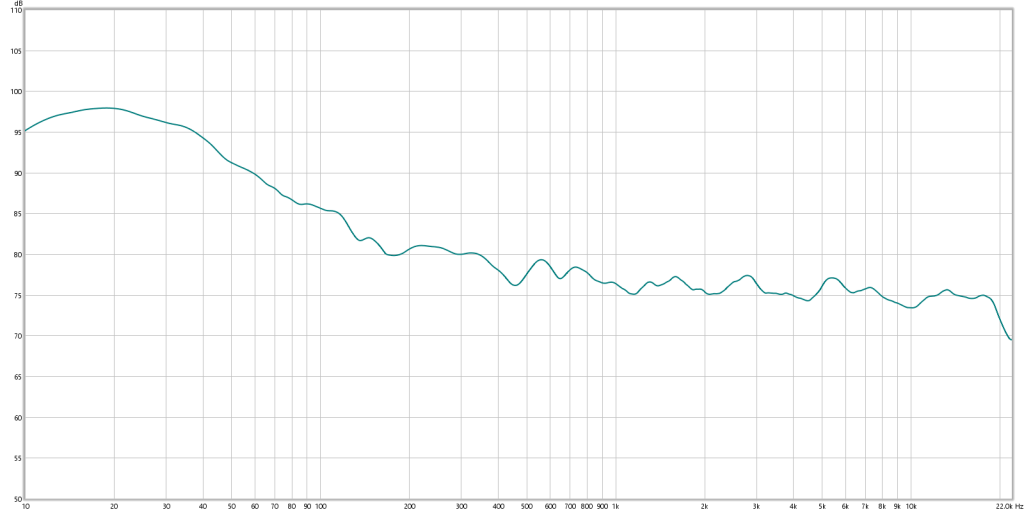Ok here goes. First up, all you guys who measure, hats off. It took me an hour to do 4 sets of response readings which I then averaged out. This is not the reading from my main car since my bit10 finally called it a day last weekend. I never got around to doing a FR for the Ford, never thought I'd need it. It would have helped while setting my new processor as and when that happens.
So for now all I have is the wifes car which has a 2+sub active off the p-80rsII. Mids are Polk Audio MM6501 and the tweeter is the vifa XT25 clone that came with the SR6500. Amps are Polk Audio and the sub is a 10" ID in a 1cuft sealed box. The car is a small hatchback. There is a night and day difference in span of control and resolution between the p80 and a full processor.
But surprisingly I was able to dial in a fairly decent baseline. Some frequencies stick out and need correction, wheher I have no controleg, 160, 600, 1 khz, 1.6 khz and 4khz. I have adjusted these in the measured response below. Sub and mid bass crossed at 50hz with sub on 30db slope and the mids at24db/oct. Mid and tweeter crossed at 3khz, 24db slope all round.
1. Set the baseline volume for measuring by using uncorrelated pn track. HU set at 54/62 and the measured level was 80db.
Measured Response is as follows:
20hz - 86db
25Hz - 88db
30hz - 89db
40hz - 90db
50hz - 90db
60hz - 88db
80hz - 82db
100hz - 83db'
125hz - 81db
160hz - 79db
200hz - 78db
250hz - 82db
315hz - 84db
400hz - 84db
500hz - 86db
600hz - 85db
800hz - 84db
1khz - 84db
1.25khz - 80db
1.6khz - 76db
2khz - 74db
2.5khz - 71 khz
3khz - 67db
4khz - 62db
5khz - 63db
6khz - 60db
8khz - 61db
10khz - 60db
12khz - 57db
16khz - 52db
In my car this is a fairly decent baseline (for a couple of days of tuning). I'm curious how this would shape up in your vehicle. Look forward to comments. Once you have dialed this in, if you can describe what sounds right and wrong we can try tweaking it a bit.
Hope ya'll have fun












